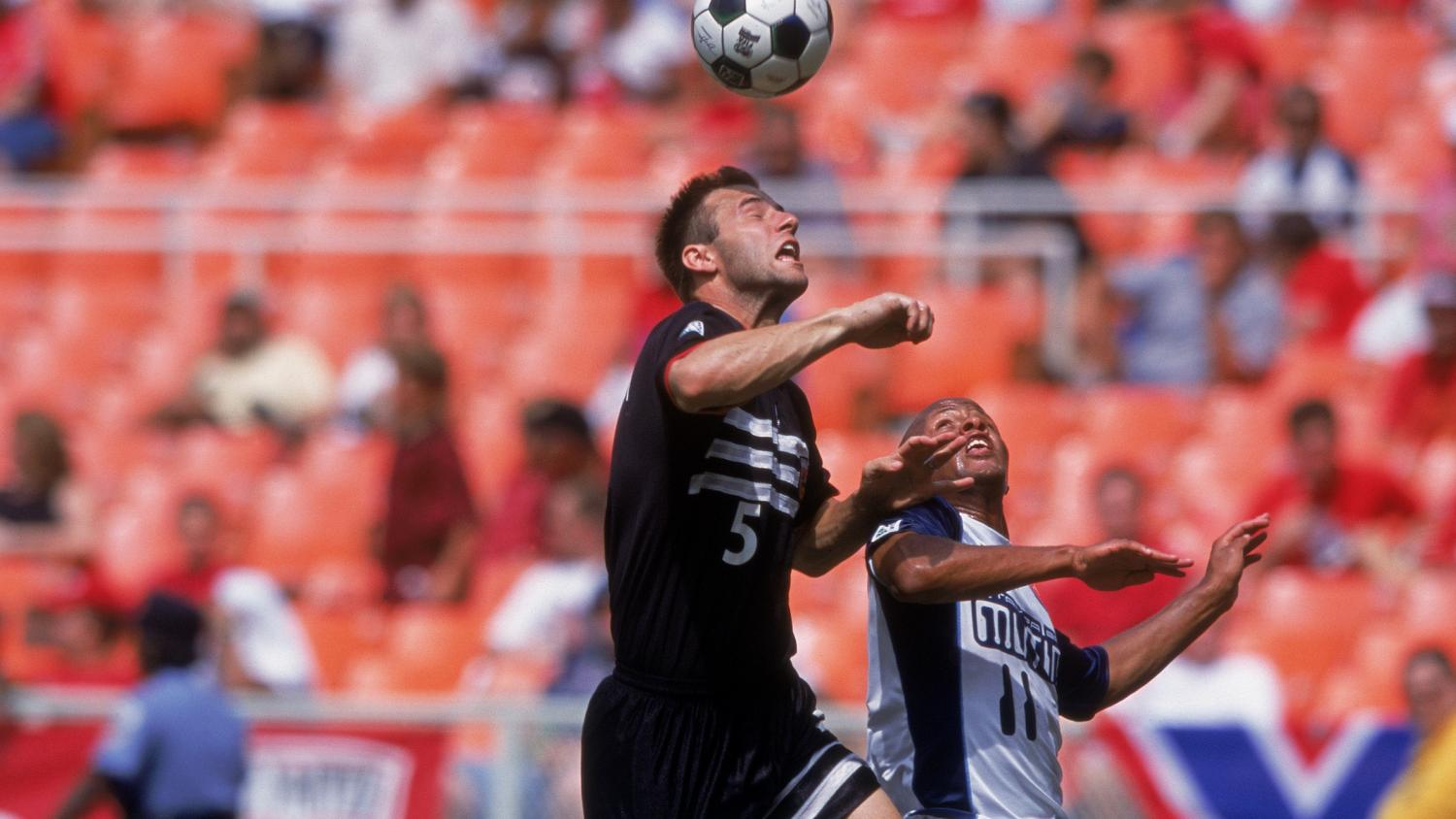For years Americans have attempted to come to grips with the fact the nation’s most popular sport, football, causes severe head injuries resulting in chronic traumatic encephalopathy with lasting impacts on both physical and mental health, often leading to premature death. For the first time, doctors have diagnosed an American professional soccer player with CTE.
A New York Times article on Tuesday detailed the life of Scott Vermillion, a former high school and college star who played four seasons in Major League Soccer. Vermillion died on Dec. 25, 2020, two days after his 44th birthday. About a year later, doctors at Boston University had an explanation.
Vermillion was an All-American in high school and was recruited to play for Bruce Arena’s Virginia Cavaliers in college, where he was a third-team All-American. He made appearances on the U.S. youth national teams and eventually joined MLS with his hometown club Kansas City Wizards. After stints with the Colorado Rapids and D.C. United, the defender’s career fizzled out after four years in MLS in part because of leg injuries.
After soccer, Vermillion’s life unraveled, the New York Times reported. He became lethargic and complained of frequent headaches. His wife, Cami Jones, divorced him in 2004 after five years of marriage.
“When I met Scott, he was a vibrant, outgoing pro athlete, super fun, a jokester,” Jones said. “I watched him change really rapidly, and it was scary.”
Vermillion turned to drugs and alcohol, was arrested in 2018 accused of domestic battery of a girlfriend and struggled with rehab programs. When he died in 2020, the cause of death was given as acute alcohol and prescription drug poisoning, according to the New York Times.
After his death, Vermillion’s mother, Phyllis Lamers, contacted doctors about examining his brain. They found Stage 2 CTE, which is linked to symptoms including memory loss, depression and erratic, often aggressive behavior. (CTE has four stages, the fourth of which is associated with dementia.)
Finding CTE in a professional soccer player isn’t all that surprising; it’s hardly the first time it’s been found in a soccer player. Studies have shown footballers are 3.5 times more likely to die from neurodegenerative diseases. Prominent soccer players in the U.S. — most notably Taylor Twellman, who retired early because of repeat head injuries — have spoken about the dangers. When CTE became a major topic of discussion in America in 2016, World Cup hero Brandi Chastain promised to donate her brain for CTE research.
But this New York Times article highlights the first public case of a professional soccer player in the U.S. being diagnosed with CTE, a stark reminder of the dangers of the sport we love, and a reminder the sport’s governing bodies must do more to protect athletes young and old.
Leagues like MLS and the Premier League have begun to put precautions in place, including limits on high-impact headers in practice and trials with concussion substitutions. Youth players have been banned from heading in countries like the U.S. and UK.
“Major League Soccer’s highest priority is protecting the health and safety of our players,” said Major League Soccer Chief Medical Officer Margot Putukian in a statement to The18. “Although head injuries, including concussions, are a risk in all sports, including soccer, MLS has comprehensive policies to educate players, coaches, officials and medical staffs about the importance of head injury identification, early reporting, and treatment. MLS is a leader in the sport, advocating for and piloting the FIFA concussion substitute program, implementing a medical spotter program to identify potential head injuries and removing from play any player with a suspected head injury for assessment and, as necessary, treatment. MLS and its medical advisors continually align our protocols with the most up-to-date science as our medical staffs provide players with exceptional care on and off the field. There is always more progress to be made, and MLS is staunchly committed to this important work.”
More can always be done, and that’s why Vermillion’s family went public with his CTE diagnosis, according to the New York Times.
To be clear, soccer isn’t as dangerous as American football, boxing or hockey, but CTE is a risk, even if some doctors say the benefits of sports like soccer outweigh the risks of injury. The scientific community is still trying to learn why some athletes get CTE and others do not.
In the end, we are all just meat sacks on a large rock hurtling through space at 67,000 miles per hour around a massive thermonuclear fusion reaction we call the sun. We are fragile beings all with our own stories with but one life to live. The story Scott Vermillion’s corporeal form was one of tragedy. But who wants flowers when you’re dead? Nobody. Instead we hope his story can lead to greater research to prevent further misfortune and protect our precious meat sacks.
Editor's Note: This story has been updated to include comment from MLS.




